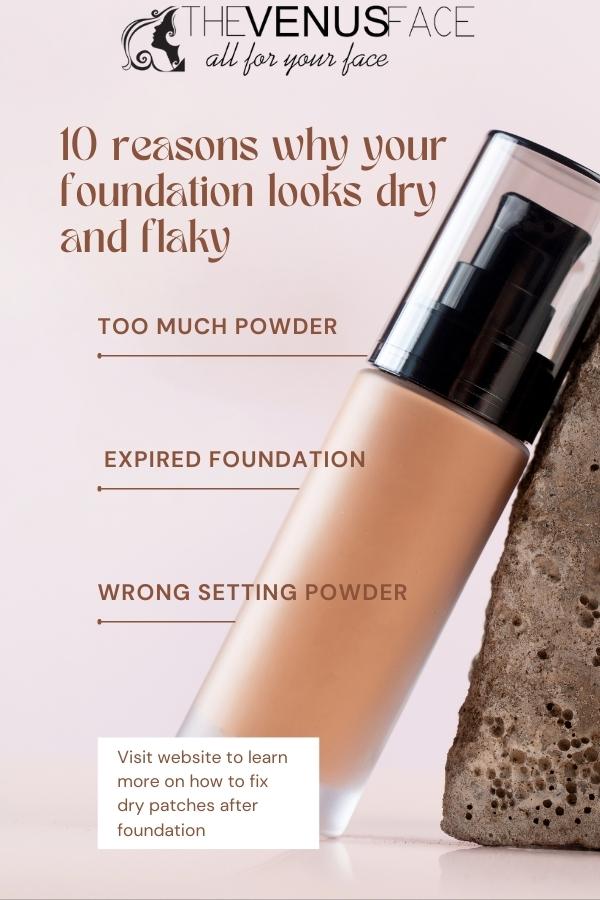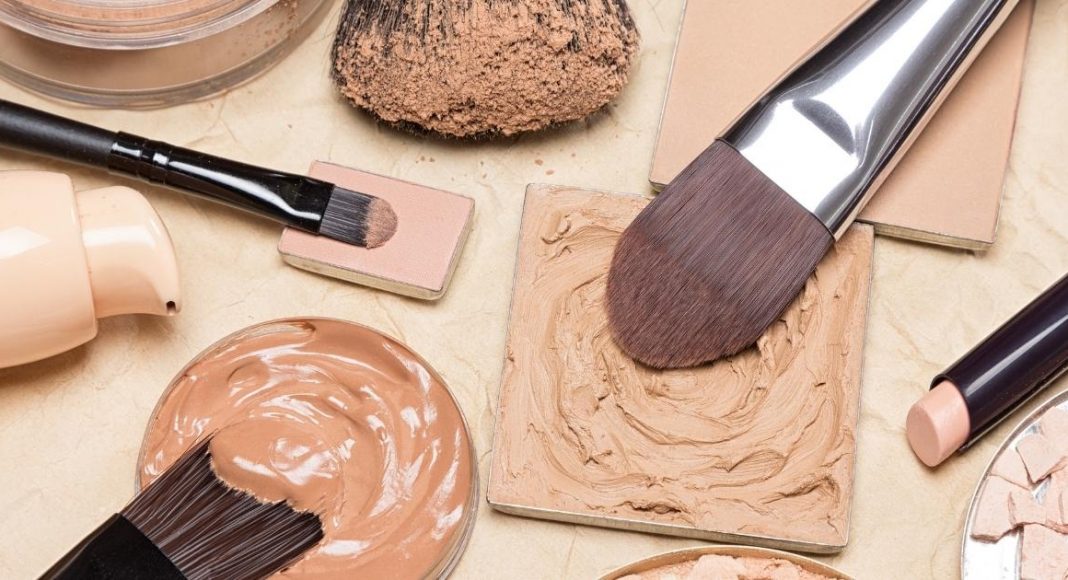Wonder why your foundation looks dry and flaky? Read on!
Everybody knows the importance of a good foundation. Not only does it provide a smooth, even canvas for the rest of your makeup, but it also helps to protect your skin from the environment. Foundation comes in a variety of formulas, from light coverage to full coverage, and it can be customized to match your skin type and needs. Needless to say, nowadays every woman has at least one bottle of foundation in their makeup bag.
However, not everyone knows how to apply foundation properly. One common mistake is using a foundation that is too dry or flaky. If you are facing this issue, read on to find out why your foundation looks dry and flaky, and how you can fix it!

10 reasons why your foundation looks dry and flaky
This can happen for several reasons, the list below will give you some insights:
Not using the right primer
If you want your foundation to look flawless, you need to start with a good primer. A primer will create a smooth surface on your skin, and it will help your foundation to glide on evenly. In addition, a good primer will help to control excess oil and keep your foundation in place all day long. If you have dry skin, look for a hydrating primer that contains glycerin or hyaluronic acid.
Applying too much powder
If you have oily skin, you may be tempted to load up on powder to control shine. However, using too much powder can actually make your foundation look dry and patchy. Instead of layering on more powder, try blotting your skin with an oil-absorbing sheet.
Not using the right foundation
Choosing the right foundation is essential, regardless of your skin type. If you have dry skin, look for a foundation designed for dry skin, which will help to hydrate and plump up your skin. In addition, avoid foundations with a matte finish, as they will only emphasize dryness. If you have oily skin, look for a foundation that is oil-free/water-based, and non-comedogenic.
Applying too much foundation
It is important to remember that less is more when it comes to foundation. If you apply too much foundation, it will settle into fine lines and accentuate dry patches. Instead, use a light coverage foundation and build up coverage where you need it.
Not using the right brush
The type of brush you use to apply your foundation can make a big difference. If you want a flawless finish, use a dense, flat-top kabuki brush. This type of brush will help to distribute the foundation evenly and prevent streaking. If you don’t have this type of brush, using your fingers to apply foundation will also work.
Not blending properly
Blending is key when it comes to applying foundation. Make sure to take your time and blend the foundation into your skin, especially around the edges of your face. A good way to test if you have blended enough is to press a piece of tissue onto your skin. If the tissue comes away clean, you know you have blended properly.
Not using the right setting powder
Once you have applied your foundation, it is important to set it with a good setting powder. This will help to prolong the wear of your makeup and prevent your foundation from looking cakey or dry. You should avoid using a setting powder that is too heavy or matte, as this can make your skin look cakey. Instead, opt for light- to medium-coverage setting powder that will help to set your makeup without making your skin look dry or dull.
Using expired foundation
Every store-bought products usually have an expiration date stamped on the packaging. Once a product is opened, it can last anywhere from 6 to 12 months. After that, the formula will start to change and it will no longer be effective. So, if you are using an old bottle of foundation, it might be time to toss it and get a new one.
You don’t take care of your skin
Skincare is just as important as makeup. If you don’t take care of your skin, your foundation will never look good. Make sure to cleanse, moisturize, and exfoliate your skin on a regular basis. In addition, use SPF to protect your skin from the sun.
Weather conditions
The weather can also affect the way your foundation looks. If it is cold outside, your skin will be drier, which can make your foundation look patchy. In addition, if you are sweating, your foundation will slide right off. This is also applied to air conditioner rooms or any place with a lot of humidity.
How to fix dry patches after foundation
Depending on the reason why you have dry patches, there are a few things you can do to fix them. Thus, the first thing is to identify the cause of your dry patches. The list above provides some of the most common reasons why people get dry patches. If you can identify the cause, it will be easier to fix the problem.
There are some basic fixes that can help with most dry patch issues:
Skincare is important for makeup
If you want your foundation to look good, you need to take care of your skin. There are basic steps that you should follow:
- Cleansing: Use a gentle cleanser that will not strip your skin of its natural oils. Avoid using harsh cleansers, as they can make your skin dry and irritated.
- Moisturizing: Use a good-quality moisturizer that will hydrate and plump up your skin. Avoid using thick, greasy moisturizers, as they can make your skin look oily and cause breakouts.
- Exfoliating: Use a gentle exfoliator to slough away dead skin cells and reveal smooth, glowing skin. Exfoliating on a regular basis will also help to prevent breakouts.
- Protecting: Use SPF to protect your skin from the sun. UV rays can cause damage to your skin, which can lead to dryness, wrinkles, and even skin cancer.
There are a lot more steps when it comes to a skincare routine. But, these are the basics that you should follow if you want to have a good foundation base.
Choosing the right foundation for your skin type
Not all foundations are created equal. Different foundations have different ingredients and finishes, so it is important to choose the right one for your skin type. If you have dry skin, opt for a foundation that is hydrating. If you have oily skin, choose a foundation that is oil-free and matte. If you have sensitive skin, choose a foundation that is hypoallergenic and non-comedogenic.
Applying foundation correctly
When applying foundation, there are some rules of thumb that you should follow:
- Use primer: Always use a primer before applying foundation. This will help to create a smooth canvas and prolong the wear of your makeup.
- Use the right brush: Use a foundation brush or a beauty blender to apply your foundation. This will help to create a smooth, even finish.
- Build up coverage: Start with a small amount of foundation and build up to the desired coverage. This will help to prevent your foundation from looking cakey or dry.
- Set your makeup: Once you have applied your foundation, set it with a setting powder. This will help to prevent your makeup from sliding off your face and help it last all day.
Final thought
Foundation is an important part of your makeup routine. But, it is also important to take care of your skin and choose the right foundation for your skin type. By following the tips above, you will be on your way to perfect foundation application.


